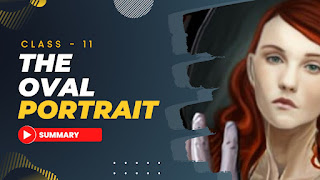Metals: Class 10 Science Notes
Metals Class 10 Science Complete Notes. This note include all the excercise given in metals chapter of science book such as question answer, numericals, give reason, diagrammatic questions and define the following. This note is published for helping students to solve their problems.
If you find any mistakes or feel like giving any suggestions then feel free to comment down.
Related Searches 🔍
- Metals and non metals Class 10 Solutions
- Physical properties of metals Class 10
- Metal and Non metals Class 10
- Metals and non metals Class 10 MCQ
- Physical properties of non metals Class 10
- Chemical properties of metals Class 10
- Chemical properties of non metals Class 10
- Class 10 Maths Science Notes
- Class 10 Biology Notes
- Acid Bases and Salts Class 10 Notes
- Class 10 Chemistry Notes PDF
- Class 10 Science Notes PDF free download
- Physical properties of metals and non-metals class 10
Chapter - 11
Metals
2. Give Reason
a. Iron is not found in a free state.
Ans: Iron is not found in a free state because iron is a very reactive metal and it easily react with oxygen to form oxide.
b. Gold is called the king of metals.
Ans: Gold is called the king of metals because gold does not react with air, water, acid, base and other chemicals in a normal pressure and temperature.
c. The part of aeroplane is made of aluminium but not by iron.
Ans: The part of aeroplane is made of aluminium but not by iron because aluminium is rust free and a light metal.
d. Copper is not found in a free state.
Ans: Copper is not found in a free state because it easily react with oxygen to produce it's oxide.
e. Coinage metals are grouped together in the group IB in the perodic table.
Ans: Coinage metals are grouped together in the group IB in the perotic table because the coinage metals like gold due to the presence of d orbital in their valence shell.
f. Gold and Silver are found in a native state.
Ans: Gold and silver are found in a native state because gold and silver does not react with air, water, acids, base and other chemicals in normal pressure and temperature.
g. Foods are wrapped in aluminium foil though it is a highly reactive metal.
Ans: Foods are wrapped in aluminium foil though it is a highly reactive metal because aluminium forms a hard protective layer of aluminium oxide which prevent air and water to enter inside food.
3. Answer the following questions.
a. Write the differences between ore and minerals.
Ans: The differences between ore and minerals are as follows:
| Ores | Minerals |
|---|---|
| The minerals from which metal can be extracted efficiently for commercial purpose is known as ores | Minerals are those natural pure, inorganic substanc which are crystalline |
| All ores are minerals | All minerals are not ores |
b. How does iron occur in nature?
Ans: Iron is a very reactive metal. So, it rarely occurs in a free state but it occurs in nature in a combined form.
c. Where is the iron located in perodic table? Write the electronic configuration of iron.
Ans: Iron is located in group VIII/8 and period 4 in the perodic table.
| Shell | K | L | M | N |
|---|---|---|---|---|
| No. of Electron | 2 | 8 | 14 | 2 |
| Sub-Shell | 1s² | 2s⁶ 2p⁶ | 3s² 3p⁶ 3d⁶ |
4s² |
d. What are the physical properties of iron? Why is iron called metal ?
Ans: The physical properties of iron are as follows :
- It is good conducter of heat and electricity
- It is malleable and ductile
- It is silvery, shiny grey coloured metal
Iron is called a metal because it shows the tendency of loosing electron during chemical reaction and it also have the above mentioned properties.
e. List any two names of different ores of the following metals.
i. Iron
- Haematite
- Magnetite
ii. Aluminium
- Bauxite
- China clay
iii. Silver
- Argentite
- Silver Copper glance
iv. Copper
- Cuprite
- Copper pyrite
v. Gold
- Sand alluvial soil
- Native or free gold
f. The external cover of aeroplane is made from aluminium instead of iron? Why?
Ans: The external cover of aeroplane is made from aluminium instead of iron because aluminium is light and rust free metal.
g. Write any four uses of the following metals.
i. Iron
- It is used for making rods
- It is used for making household utensils
- It is used in the manufacture of steel
- It is used in the construction of buildings
ii. Aluminium
- It is used for making utensils
- It is used for making electric wire
- It is used for making coins and alloys
- It is used for making aluminium foil
iii. Copper
- It is used for making electrical goods and cables
- It is used for making coins
- It is used for making jewellery
- It is used for electroplating
iv. Gold
- It is used for making Jewellery
- It is used for gold plating
- It is used for making coins
- It is used for preparing alloys
- It is used for making coins
- It is used in electroplating
- It is used in dentistry for filling teeth
- It is used for the preparation of silver salt
h. What are Coinage metals? How are they different from other metals?
Ans: Coinage metals are those metals which are used for making coins and jewellery They are different from other metals because they are used for making jewellery as they are meliable, ductile and rest free.
i. Why gold and silver used for making jewellery.
Ans: Gold and silver are used for making jewellery because they are meliable, ductile and rest free metals.
j. Which metal can be extracted from the ore of bauxite and Haematite?
Ans: Aluminium can be extracted from the ore of bauxite and Iron can be extracted from the ore of Haematite.
k. What is the use of aluminium foils?
Ans: The use of aluminium foil is to cover food, cigarette, Pharmaceutical products etc and to prevent the air and water to enter inside.
l. Which metal is extracted from chalcocite? Why is this metal used in making electric cable? Write any three metals used in making electric cable? Write three any uses of it?
- Copper
- Aluminium
- Gold
Uses of copper
- It is used for making coins
- It is used for making jewellery
- It is used for electroplating
Uses of Aluminium
- It is used for making utensils
- It is used for making electric wire
- It is used for making coins and alloys
Uses of Gold
- It is used for gold plating
- It is used for making coins
- It is used for preparing alloys
m. Arrange the following metals in ascending order according to the reactivity. Gld, Iron, Aluminium, Silver, Copper
Ans: Metals are arranged according to their reactivity.
- Gold
- Silver
- Copper
- Iron
- Aluminium
n. Write down the symbol, atomic number, atomic mass, orbital electronic configuration and valency of :
i. Iron
Atomic Symbol: Fe
Atomic number: 26
Atomic Mass: 55.84 (56)
Valency: 2 (ferrous) and 3 (feric)
Electronic Configuration: 1s², 2s², 2p², 3s², 3p⁶, 4s², 3d⁶
ii. Aluminium
Atomic Symbol: Al
Atomic No. 13
Atomic mass: 27
Valency : 3
Electronic Configuration : 1s², 2s², 2p⁶, 3s², 3p¹
iii. Copper
Atomic sysmbol: Cu
Atomic No: 29
Atomic Mass: 63.57 (64)
Valency: 1 and 2
Electronic Configuration: 1s², 2s², 2p⁶, 3s², 3p⁶, 4s¹, 3d¹⁰
iv. Silver
Atomic Symbol: Ag
Atomic No: 47
Atomic mass: 108
Valency: 2
Electronic Configuration: 1s², 2s², 2p⁶, 3s², 3p⁶, 4s², 3d¹⁰, 4p⁶, 5s¹, 4d¹⁰
v. Gold
Symbol : Au
Atomic No. 79
Atomic mass: 197
Valency: 2 (aurous), 3 (auric)
Electronic Configuration: 1s², 2s², 2p6, 3s², 3p⁶, 4s², 3d¹⁰, 4p⁶, 5s², 4d¹⁰, 5p⁶, 6s¹, 4f¹⁴, 5d¹⁰
o. Write in brief about the occurance of metals in Nepal?
Ans: More than 80 types of minerals are reported to be found in a large amount in different parts of Nepal. Some of them are iron, Copper, gold etc. Iron ore is found in lalitpur, Tanahun, chitwan etc. Gold ores are found in river rapti, river Sunkoshi etc.
p. Define
i. Ore
Ans: The minerals from which metals can be extracted efficiently for commerical purposes is known as ores.
ii. Minerals
Ans: Minerals are those natural, pure, inorganic substance which are crystalline.
iii. Coinage metal
Ans: Those metals which are used for making coins and jewellery is known as coinage metal.
If class 10 metals notes were helpful to you then feel free to share this notes with your friends & classmates.







